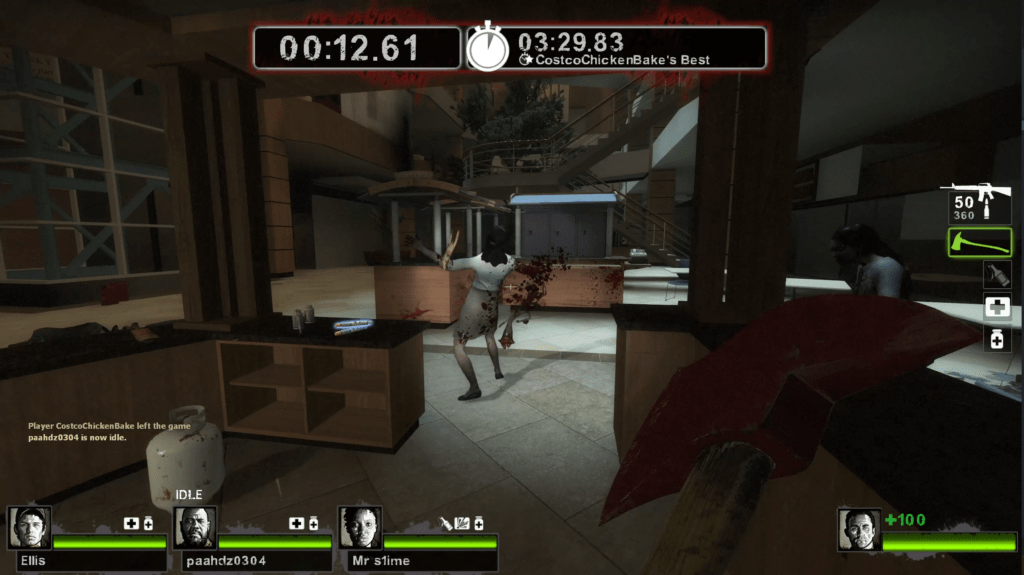Game Name: Left 4 Dead 2
Target Audience: It is rated M, for Mature, so individuals that are 18+ years old are its intended audience. This game may attract people who are interested in zombies, action, team survival, and FPS games.
Games Creator: Turtle Rock Studios and published by Valve.
Platform: Personal Computer (PC)
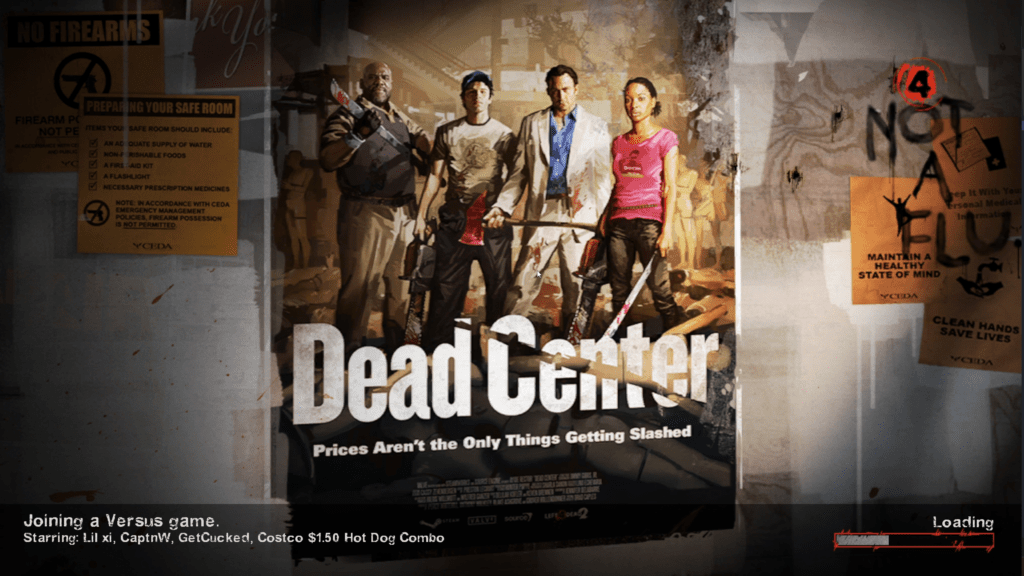
Left 4 Dead 2 has multiple game modes, single-player and multiplayer. For this critical play, I played “Versus”, a multiplayer PvPvE game mode that splits the lobby into one of two groups: the survivors and the horde. Survivors must survive against the player-controlled zombies and NPC zombies that attempt to overpower the humans. The player-controlled zombies respawn with a different type of zombie that they control, each with their respective primary and secondary attacks. I also played “Survival”, a multiplayer PvE game that focuses on the survivors’ survival attempts against an endless onslaught of NPC zombies. It is a battle against the clock; the longer the survivors survive, the better the medal (bronze, silver, gold) they receive as a team. The single-player mode of this game is similar to “Survival”, but the rest of the humans are NPCs, aiding the player in their quest to reach a certain objective (like a safehouse located across a farm that is zombie-infested). The zombies in all game modes spawn in waves.
The rarity tier above common is special, which includes the Boomer and Tank zombies which aim to brute force their way towards the player with increased speed, health, and ranged attacks. Rare zombies like the Witch and Chargers benefit from another speed, health, and attack damage buff. Unique zombies, which are limited to specific maps, like the Jockey or the Spitter have rarer spawns, but oftentimes can completely incapacitate the player with one hit, leaving them to bleed out if they are not quickly aided by a teammate.
In regards to the first type of Game Balance, the challenge level is appropriate for the audience as all single-player levels start off with the common type of zombie that simply runs toward the player with the intention of dealing melee damage. To help with pacing, the initial waves of zombies are relatively small when compared to the massive hordes that will soon encompass the whole area towards the end of the level, leaving the player with little to no room to maneuver and reload their weapons. Moreover, after the first 1-3 waves of common zombies, special types of zombies begin to spawn; each of these zombies has a defining special move and rarity. Towards the end of a level, multiple of each tier zombie may spawn near the player, combining their increased damage, health, special effects, and number to create a deadly horde that the player must avoid and protect their team from. In order to successfully complete a level, the player must stay close to their team, otherwise, they may be one hit away from a swift death with no chance of revival, weakening the team as a whole.
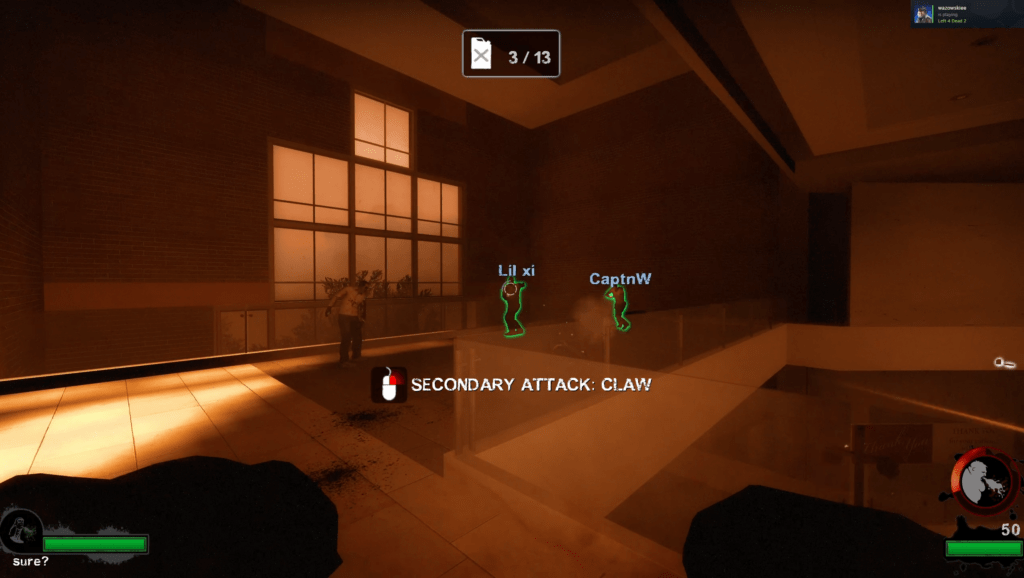
In my “Versus” game mode testing, there is an evident asymmetry between the player-controlled survivors and the player-controlled zombies in terms of their respective health, damage per second (DPS), ability to respawn, and NPC aid. Specifically, each individual human starts the game with more health than their zombie counterparts, less DPS, without the ability to respawn after dying, and no NPC help (except for when idle, where the human turns into an NPC and lives in a single-player). The zombies’ ability to respawn helps balance out the increased individual health of a survivor, whereas the limited-range attacks of the zombies make them more vulnerable to the gunfire from the survivors. To avoid player-controlled zombies from overwhelming the survivors with kamikaze-like attack strategies in the hopes of getting a lucky death blow, due to their relatively higher DPS, the zombies are limited by a 15-second spawn timer to give the survivors some breathing room to recover and strategize. Since player-controlled zombies are routinely respawning, the spawn timer reduces the total amount of play time a zombie might have throughout the game.
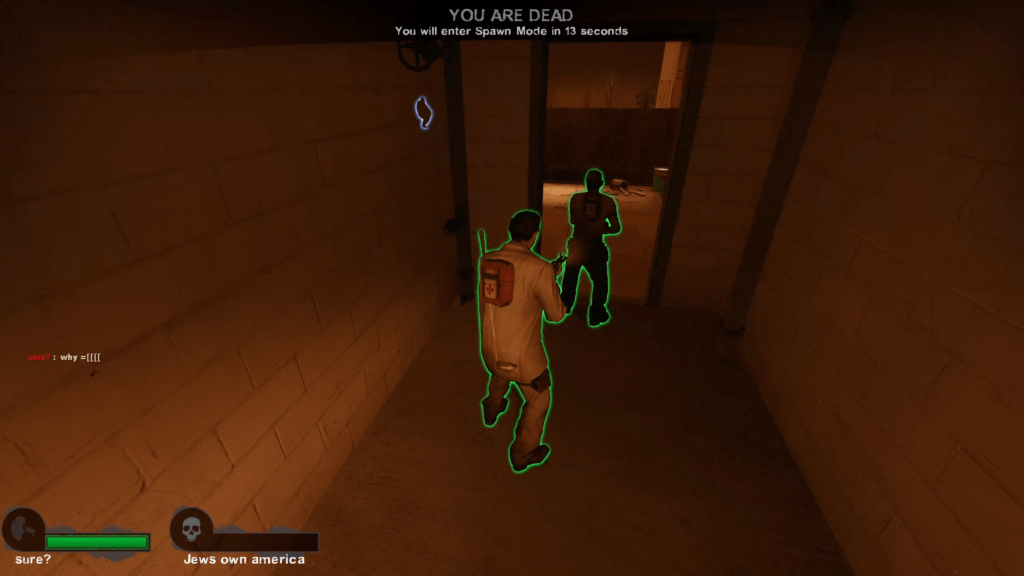
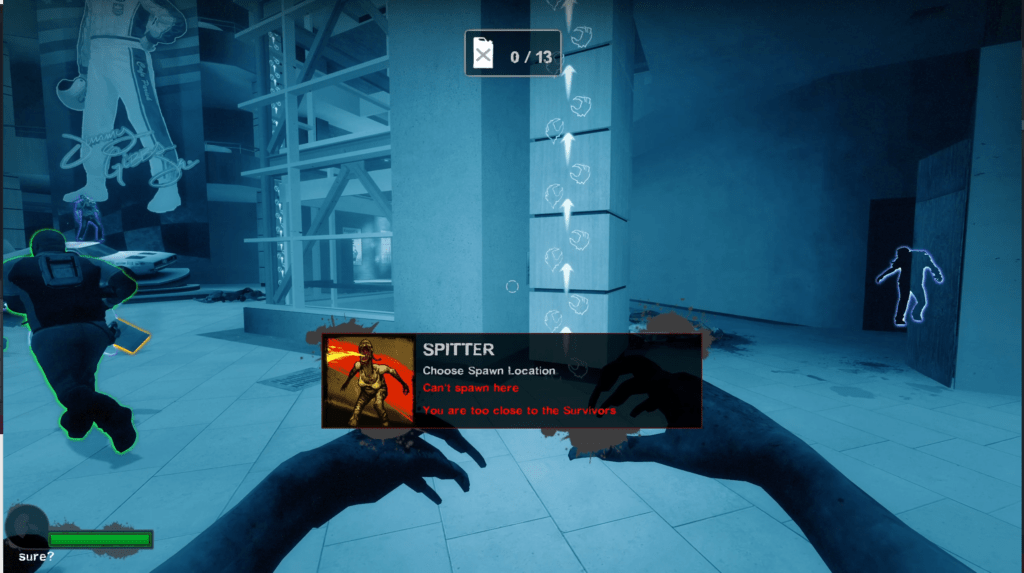
Thus, zombies must be resourceful in their respawning efforts: they must choose a location that the humans may not see them spawn from, reducing the success odds of revenge attacks, and avoiding being out-of-action for the majority of the game after constant deaths.
The meta-strategy for human survivors is to stay together, to help defend their teammates from one-hit attacks, and to have consistent healing supplies made available by stockpiling heals in a centralized location.
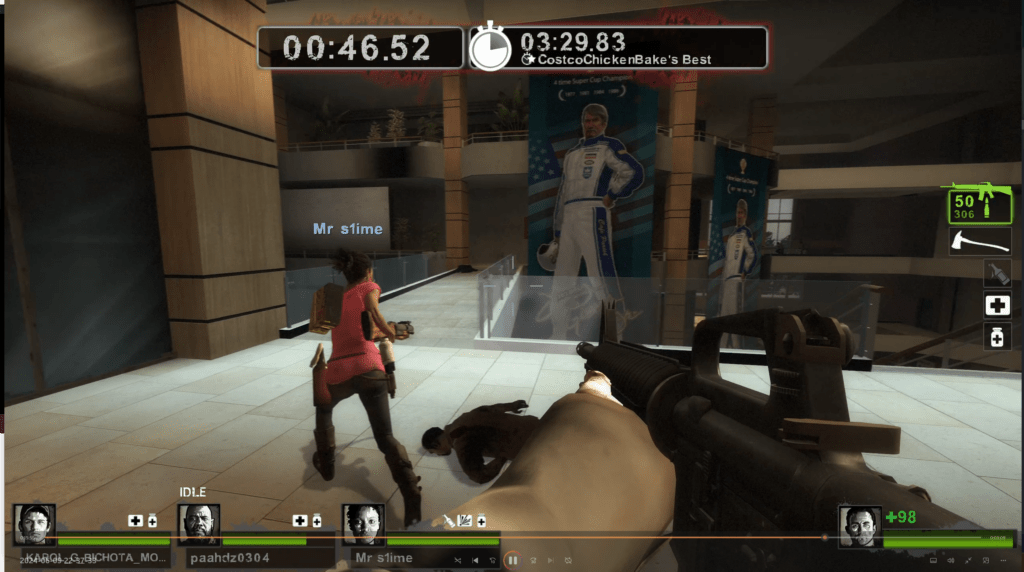
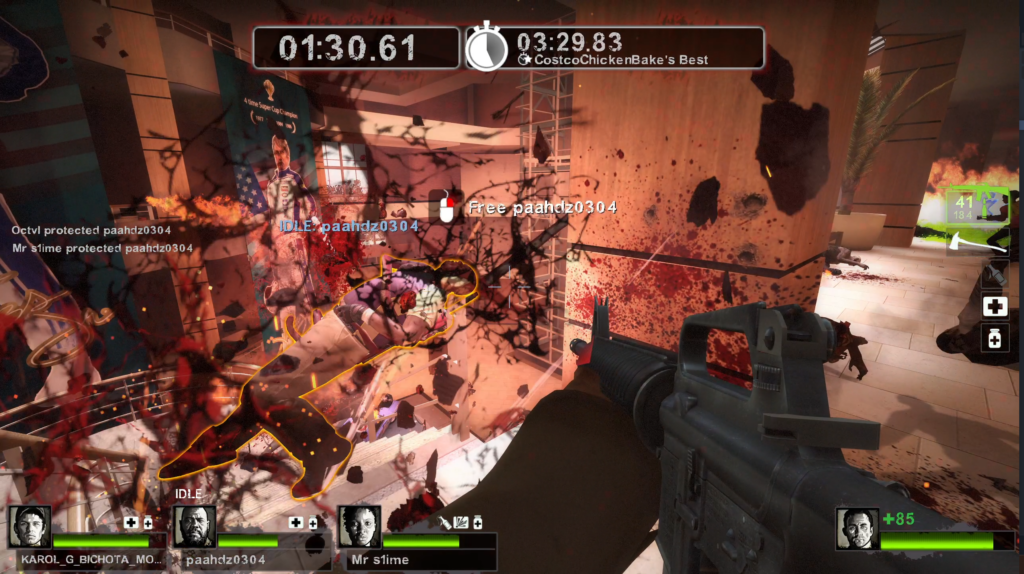
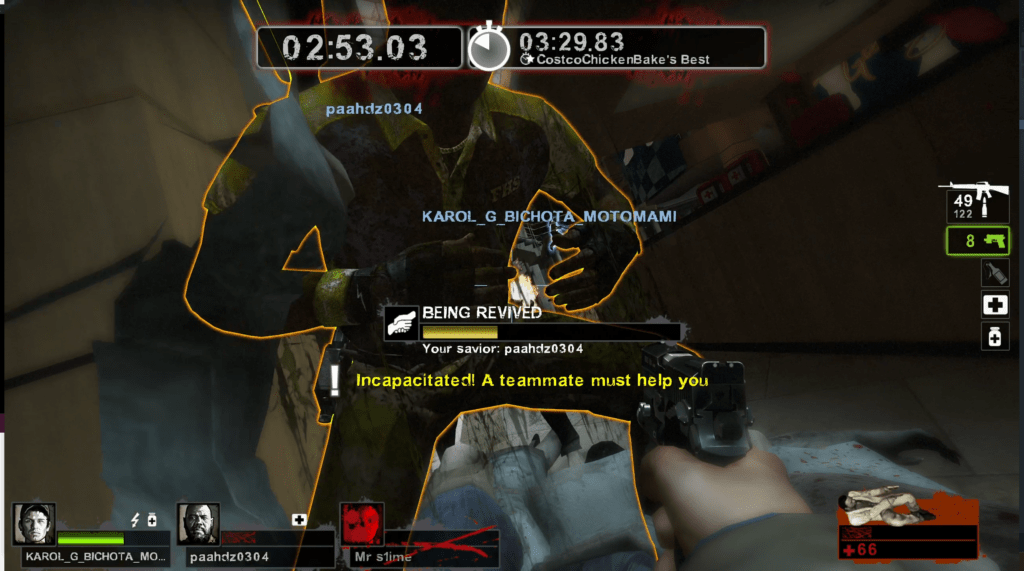
The zombies can change the tide of a game by strategically waiting for a tank zombie to spawn and act as a damage sponge while the rest of the zombies combine their abilities to maximize damage and neutralize individual survivors without the prospect of revival. The katana melee weapon is the least balanced melee weapon that is available for the survivors due to its increased attack speed and dexterity when compared with the rest of the melee weapon class, which all do relatively the same attack damage.
